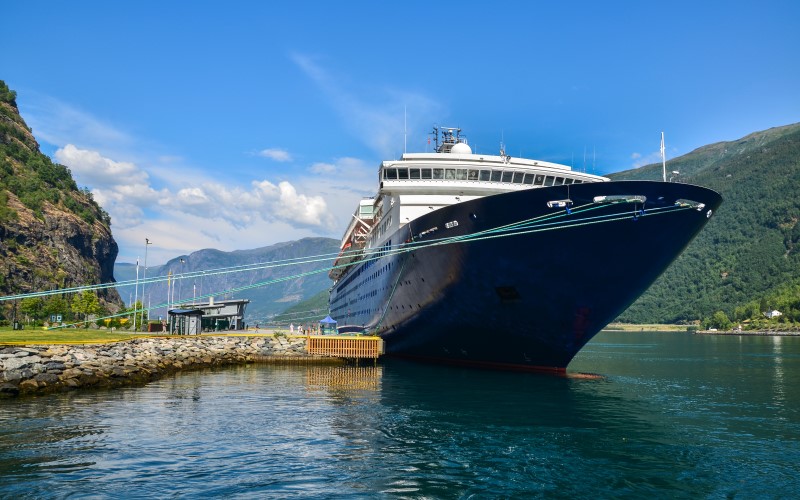Machu Picchu, the best conservated Inca city in Peru
Uncategorised Posted by gaytravel on Wed, Mar 21st, 2018 @ 6:54:33 PM 413 1

Machu Picchu is an Inca city in Peru that the Spanish never discovered. For that reason, it has never been destructed. You can find much back from the Inca civilisation. Administratively, Machu Picchu is a Distrito of 8400 inhabitants in the Urubamba province in the Cusco region of Peru.
History of Machu Picchu
link
It is assumed that the construction of the city of Machu Picchu was started around 1440, under the direction of Pachacuti. The city was inhabited until the Spanish conquest of the area in 1532.
Scientists disagree about the function of the city. Because the city is so inaccessible, it is assumed that the city did not have a sectional function. It is often assumed that Machu Picchu was a home for kings and other high ranking people. The city has many lodgings for nobles and a few dwellings for their servants. Around 750 people could stay in the city. During the rainy season, when there were no kings, there would have been far fewer people in Machu Picchu. When the Spaniards defeated the empire of the Inca, the regular migration from and to Machu Picchu stopped by nobles and left the city.
According to some, the city would have been a fortress to defend the Inca empire. After the Spanish conquest, there was no longer any need for the Incas to keep coming. With this statement, not everyone agrees, because the location of the city does not make it plausible that from there the Inca empire was defended. In addition, there were too few homes for foot soldiers.
According to a third theory, Machu Picchu would have been mainly intended for collecting coca leaves, because it is at a point from which many plantations were accessible. But also after the Spanish conquest, the coca continued to play an important role in the area so that this theory does not explain that the city was abandoned.
It was recently established that in 1866 German prospector and timber merchant Augusto Berns found the mountain town and plundered it, with permission from the Peruvian government. Berns sold the historical treasures to European museums. In 1911 the historian Hiram Bingham carried out a study on the Inca paths in the vicinity of the city. During this study trip, he discovered Machu Picchu again. The city became widely known in 1913 when the National Geographic devoted a complete song to Machu Picchu.
In 1983 the city was included in the UNESCO World Heritage List. It is a popular tourist attraction, which is of great importance to the tourism of the entire region. Each year the site attracts around 400,000 visitors. UNESCO fears that this large number of visitors will further damage the city. Since the 1990s shops, hotels and the like have been built and many new buildings are being built along the old Incapad along which this city can be reached.
The building of the city
There is a residential area in the city with a large square, a military zone and a religious zone. Between the religious buildings were also the living quarters of the court. In the religious zone, you will find temples for the sun god and the moon goddess. There is also a sundial at the highest point of the city.
Huayna Picchu
An eye-catcher on all images of Machu Picchu is the Huayna Picchu (“young mountain”), the mountaintop that rises high above it on the north side of the city. The summit is 2700 meters high and can be reached on foot via a rather steep climb. In places where the path is too steep, there is a hold on ropes. The ascent takes about an hour and a reasonable condition is needed.
Geology
The city of Machu Picchu is mainly made of granite. It is clear that the granite, with large minerals, can be found in the area. The research found 2 probable mines in the vicinity where the granite came from. The granite is an igneous rock that has been intruded and solidified between the late Perm and the middle Jurassic. At that time there was a rift that is more or less the same with the modern Andes.
During the Eocene, this rift system transformed as a result of the Alpine orogenesis. The transformation also caused a lot of fractions. Machu Picchu is located between two fault lines through which it lies in and drains. The fault lines can more or less be recognized in the landscape on the basis of the course of nearby rivers
How to get there?
Transport
The village of Aguas Calientes, located by the river at the foot of Machu Picchu, can only be reached by train. The village is isolated from the national road network. Because of this, coaches from Cuzco do not drive any further than Ollantaytambo, from where it has to be switched to the train. For the local population, there is an early and late train that is not accessible to tourists. The isolated location of Machu Picchu led to the fact that in January 2010 almost two thousand tourists could not leave the area for several days after part of the railroad was blocked by heavy rainfall. Peru Rail Official website and Inca Rail
From Aguas Calientes, there are often buses to Machu Picchu. The 350-meter climb through the tropical rainforest can also be made on foot. Aguas Calientes is a village that is entirely focused on tourism and has countless restaurants and lodges with prices that are significantly higher than in the rest of the country. At the end of the village, there are hot springs. The village is located in a tropical climate zone and there are many tropical plants and animals to see. Due to the deep location in the valley, there is little sunlight.
The Incapad
The Capaq Nanpad from Ollantaytambo to Machu Picchu is an Inca trail that gives direct access to the park. For this, only a limited number of hikers are admitted per day, accompanied by a guide (500 per day in 2011). Test animals are forbidden to avoid damage to the path. Carriers are used to carry the luggage.
Hotels
5-stars hotels
All other hotels in Machu Picchy
Search a hotel in Machu Picchu, PeruHostels
Hostels are the cheapest hotel solution and mostly sought for by backpackers and other youthful or adventurious travelers. There are six hostels in Machu Picchu:
Seach a hostel in Machu Picchu, Peru
Map
Find on the map the most convenient location for your stay.
Flights
Unfortunately, we don't have actual data for flights from London to Cuzco. Find tickets from London to CuzcoCheap flights to Cuzco
| Origin | Departure at | Return at | Find tickets |
|---|---|---|---|
| Lima | 27 January 2025 | 30 January 2025 | Tickets from 48 |
| Santiago | 19 February 2025 | 20 February 2025 | Tickets from 216 |
| Sao Paulo | 21 March 2025 | 24 March 2025 | Tickets from 251 |
| Asuncion | 21 March 2025 | 23 March 2025 | Tickets from 366 |
| Quito | 19 December 2024 | 22 December 2024 | Tickets from 372 |
Cheap flights from Cuzco
| Destination | Departure at | Return at | Find tickets |
|---|---|---|---|
| Lima | 15 February 2025 | 18 February 2025 | Tickets from 97 |
| Iquitos | 7 April 2025 | 8 April 2025 | Tickets from 174 |
| Santiago | 14 January 2025 | 18 January 2025 | Tickets from 234 |
| La Paz | 26 January 2025 | 30 January 2025 | Tickets from 431 |
| Rio De Janeiro | 2 January 2025 | 7 January 2025 | Tickets from 752 |
View all cheap flights to Cuzco from any city of depart
What is NEXXTRIP?
NEXXTRIP is a travel site with flight search engine based upon AVIASALES. Except for flights it also offers hotels and holidays packs from different travel agents. NEXXTRIP also has gay travel and a business directory.
NEXXTRIP - trusted by 100 000 + regular travelers
MDB free download
























